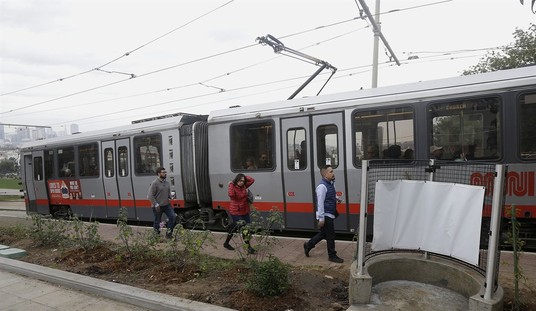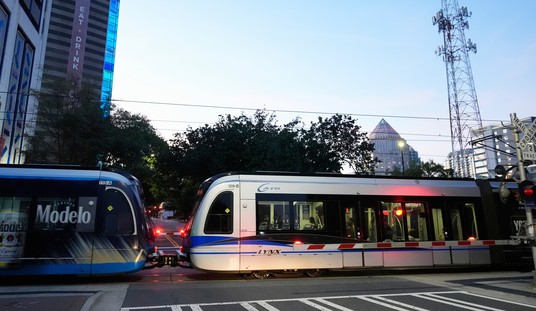Yes, I'm writing another post about math. Today the Atlantic published a story titled "A Recipe for Idiocracy" which looks at the decline in students ability to do math when entering college. There are probably all sorts of factors involved here but at the root of many of them is the achievement gap and the push for more equity.
For the past several years, America has been using its young people as lab rats in a sweeping, if not exactly thought-out, education experiment. Schools across the country have been lowering standards and removing penalties for failure. The results are coming into focus.
Five years ago, about 30 incoming freshmen at UC San Diego arrived with math skills below high-school level. Now, according to a recent report from UC San Diego faculty and administrators, that number is more than 900—and most of those students don’t fully meet middle-school math standards. Many students struggle with fractions and simple algebra problems. Last year, the university, which admits fewer than 30 percent of undergraduate applicants, launched a remedial-math course that focuses entirely on concepts taught in elementary and middle school.
Other UC schools are seeing the same thing, as are schools in other parts of the country. The result is that math scores have dropped to about where they were 50 years ago. All of the progress made since the 1970 has disappeared over the last decade. The obvious question is why.
One theory is that the attention-shredding influence of phones and social media is to blame. The dip in math scores coincides with the widespread adoption of smartphones; by 2015, nearly three-quarters of high-school-aged kids had access to one. A related possibility is that technology is making students complacent. Emelianenko told me that students “are just not engaged in math classes anymore”; they seem to believe that they don’t need to learn math, because they can use AI instead.
Technology may be part of the problem but a lot of the decline also coincides with the pandemic when schools were closed at the behest of teacher's unions. But it wasn't just that schools were closed, it was that while schools were closed many school districts gave up on enforcing any standards. In many places it was impossible to fail and very easy to get an A.
Districts that spent most of the 2020–21 school year mandating remote learning saw students fall more than half a grade behind in math; districts that reopened earlier saw more modest declines. These difficulties prompted teachers to further relax their standards. “Everyone was just exhausted and challenged by the circumstances around the pandemic,” Joshua Goodman, a Boston University professor of economics and education, told me. “And I think one of the reactions to that was for everyone involved to say: ‘Let’s lower our expectations. Let’s make sure that we don’t fail students when they’re not doing their work, because the world is challenging right now.’” Many districts adopted a “no zeros” policy, forcing teachers to pass students who had little command of the material. One study of public-school students across Washington State found that almost none received an F in spring 2020, while the share of students who received A’s skyrocketed. Math grades have remained elevated in the years since.
Together, these changes meant that even as students’ math preparation was stagnating, their grades were going up. The UC San Diego report notes that more than a quarter of the students who placed into the elementary- and middle-school-level remedial course last year had earned straight A’s in their high-school math classes.
The pandemic also led to a lot of schools abandoning standardized tests like the SAT. Initially, schools had no choice but to make the tests optional because students couldn't take the tests (gathering a bunch of people in a room for hours was not possible). But the decision to drop the SAT continued for a different reason:
...the UC system eliminated its best tool for assessing students’ academic preparedness. In 2020, system leaders voted to phase standardized-test scores out of admissions decisions. They argued that the tests worsened racial divides and unfairly privileged wealthy students. But SAT and ACT scores are the most reliable predictors of a student’s math ability, the report found.
The pandemic is long over now but algebra still hasn't returned to some Middle Schools, grade inflation is still running rampant (even at places like Harvard), and the overwhelming majority of schools still treat the SAT as optional.
And despite Leonhardt’s contention, the leaders of these colleges did not stick with these policies because they are liberals or politically correct. Many have remained test optional because they have found that their institutions are attracting a larger and more diverse set of applicants than they previously had, in keeping with their institutions’ strategic goals and mission.
Take Texas Tech University, hardly a hot-bed of left-wing radicalism. According to Jason Hale, Texas Tech’s assistant vice president of enrollment management, going test optional has helped the university fulfill the primary plank in its current strategic plan: “Educate and empower a diverse student body.”
“As a state institution, we really have a mission to mimic the demographics of our state,” Hale said during a panel discussion on test optional admissions at the National Association for College Admissions Counseling’s annual conference in Los Angeles in September. “And test optional has helped us do that.”
Texas Tech’s experience is not uncommon, as the preliminary results of a national research study released this summer showed that many colleges that became test optional during the pandemic have become more diverse. The researchers found that moderately selective colleges experienced a statistically significant increase in Black student enrollment of 13 to 19 percent after they stopped requiring applicants to submit test scores.
In a word, ditching the SAT helped with equity. Not testing student's math skills has become an advantage in the view of many administrators.
There are a bunch of factors that played into the decline in student math scores, but a desire to ignore the achievement gap and create more racial equity is certainly one of the prominent ones. That same push also helps explain why students arriving at college can't do math like they used to. The ability to do math used to be seen as a sign of individual merit. Now schools treat it as a sign of the racial inequity that they need to overcome.
Editor’s Note: Do you enjoy Hot Air's conservative reporting that takes on the radical left and woke media? Support our work so that we can continue to bring you the truth.
Join Hot Air VIP and use the promo code FIGHT to get 60% off your VIP membership!








Join the conversation as a VIP Member